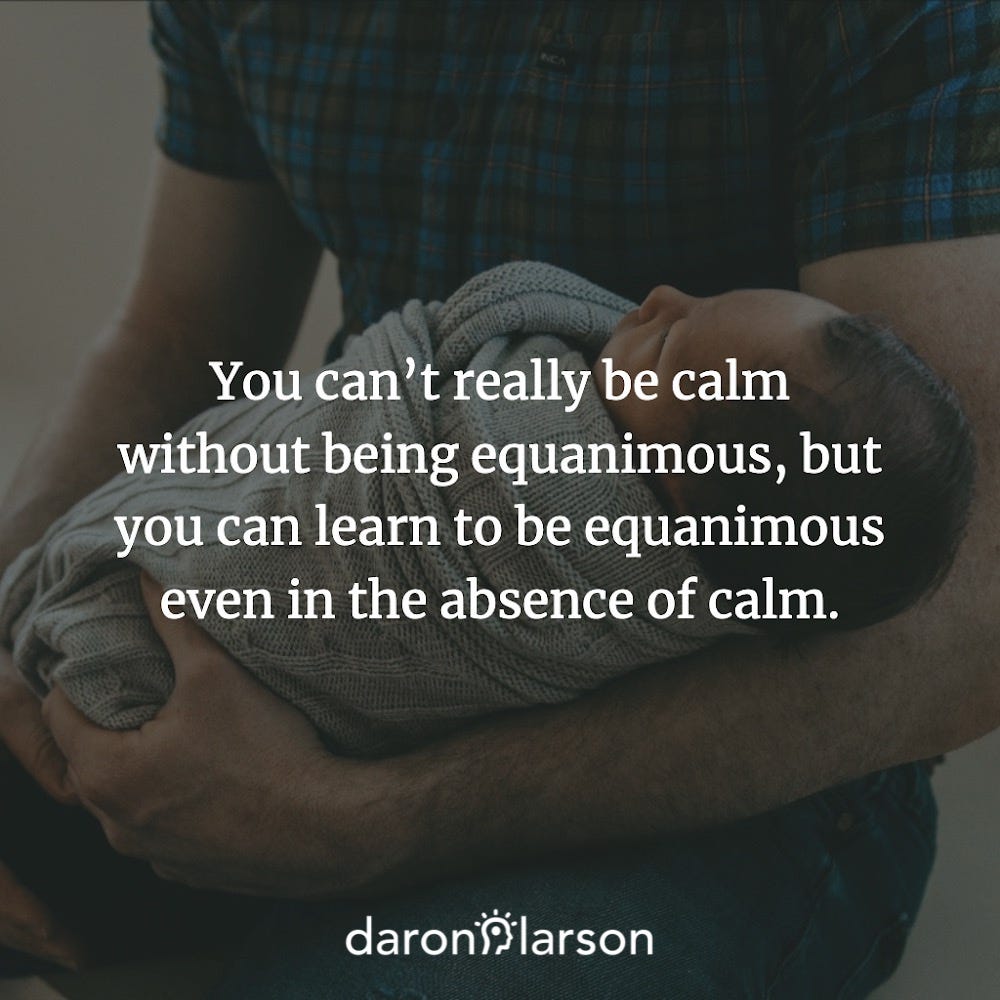One of the biggest misconceptions about mindfulness is that it’s solely about trying to stay calm. But mindful awareness reveals its liberating power when savoring pleasant sensations becomes a pathway to not always needing to be calm.
Don’t get me wrong. I’m a huge fan of relaxation. I appreciate it when situations cause it to show up spontaneously. It’s a big relief when I manage to coax it into appearing or deepening. But when I experience physical pain or emotional distress, trying to force myself to calm down only increases my internal friction.
Internal friction is what I call the unease we experience when there’s a gap between what’s happening and what we wish were happening. Physical pain, emotional pain, and confusion can dramatically increase the size of that gap. The wider the gap, the greater the friction.
The attentional skill of equanimity helps to close this gap and reduce internal friction, sometimes by a little and sometimes by a lot.
What is equanimity?
Equanimity is the ability to allow a sensory perception to play out without trying to change it. It’s an attentional skill you already possess that strengthens with habitual exercise. It’s a counter-instinctual way of relating to real-time sensations with minimal interference.
Instead of attempting to understand the concept of equanimity intellectually, focus on experiencing it viscerally.
Consider what it feels like to take care of a newborn.
Sometimes, babies fall asleep easily when held. Other times, they may become fussy, but a little rocking or singing can help soothe them.
There are plenty of inevitable moments, though, when babies become upset and inconsolable, and all we can do is hold them gently and keep them safe until they calm down.
It is during these challenging moments when tangible relief is unavailable that we are initiated—willingly or not—into the vast, timeless community of caregivers who, despite feeling powerless, give it their imperfect best.
Our emotions are complicated, but our love and commitment eventually become less dependent on whether the child ever settles or how long it takes. We try to embody safety externally as the infant’s internal storm runs its course. It’s not an easy task, but it is profoundly human to try at all.
Equanimity is present in all three scenarios, but its liberating power is revealed when we encounter discomfort we’re unable to resolve. When we are confronted with the limits of our control, we discover what we are capable of holding. We also learn that this isn’t a fixed trait, but a capacity that responds to practice.
When we practice mindfulness, we learn to calibrate our ability to hold a deeper, broader, more complicated variety of sensations with less internal interference, one sensation at a time.
Each moment of mindful awareness lasts only a few seconds.1
When you encounter a pleasant sensory perception, taking the time to savor it without improving or extending it strengthens your ability to remain equanimous in the face of comfortable sensations, which enhances your enjoyment of being calm.
Noticing unpleasant sensory perceptions without trying to fix them—for a few seconds at a time2—teaches you how to relax the impulse to fight against uncomfortable sensations. This practice prepares you to avoid making challenging moments even worse.
Being deeply relaxed requires, reveals, and strengthens equanimity, but you can also learn to be equanimous in the absence of calm.
With a little courage and curiosity, and plenty of practice, you’ll be surprised to find how much richer your life can feel when lived with less internal friction.
Exercise
This exercise strengthens equanimity by exploring visual and physical relaxation, one perception at a time.
Circumstances for learning this attention exercise
in the middle of your workday
taking a break from responding to emails
after a difficult conversation
Listen to this episode with a 7-day free trial
Subscribe to Phenomenal Awareness to listen to this post and get 7 days of free access to the full post archives.













